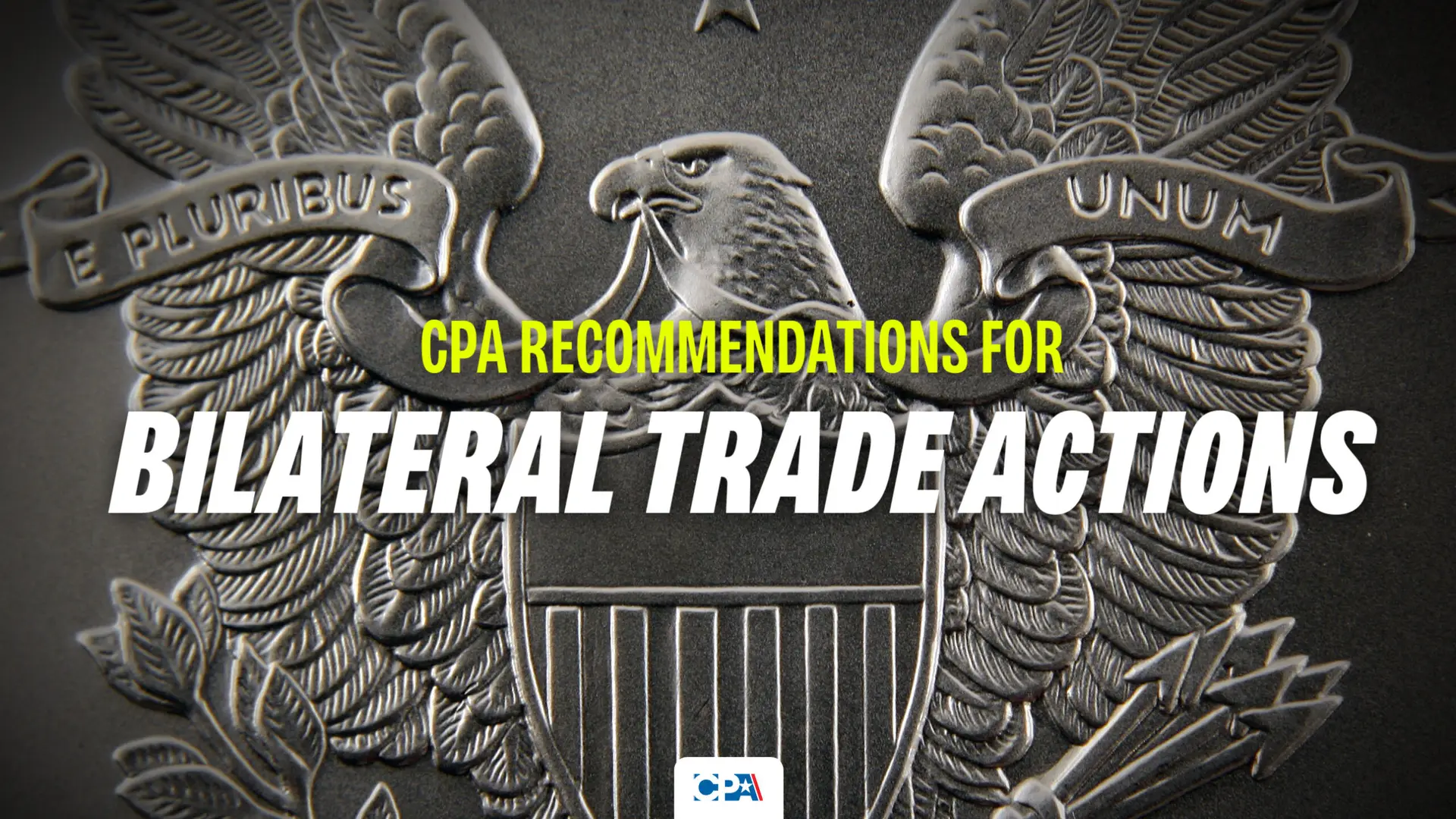KEY POINTS
- Aluminum imports into the U.S. have surged in recent years, with some product categories seeing a 380% increase since 2015.
- Many countries have already been found guilty of dumping aluminum into the U.S. at artificially low prices.
- The toll on aluminum industry jobs has already mounted to nearly 20,000 as well as many plant closures.
- Amid the surge, countries such as Mexico continue to benefit from duty-free status despite continued violations of the U.S.-Mexico trade agreement.
- The aluminum industry is essential for a wide range of sectors, from aerospace and defense to green technologies.
The Domestic U.S. Aluminum Industry is Essential for Aerospace, Defense, and Green Technology
The U.S. aluminum industry is a critical component of the nation’s economic and national security infrastructure. Aluminum is an essential material used in a wide range of applications, from defense and aerospace to automotive and renewable energy technologies. As the U.S. transitions to greener energy sources, aluminum’s role in the production of electric vehicles, solar panels, wind turbines, and other green technologies will become even more crucial.[1]
Maintaining a robust domestic aluminum industry is not only important for maintaining and creating jobs, but it is also about ensuring that the U.S. has the capacity to meet its strategic needs without relying on foreign imports, especially from countries considered geopolitical adversaries.
Surging Imports Putting Great Strain on the Domestic Industry
In the last ten years, the U.S. aluminum market has experienced a dramatic increase in imports. This surge is not merely a fluctuation in trade patterns but is instead a symptom of a broader, more concerning trend of global overcapacity. As shown in Figure 1, total U.S. aluminum imports for the key aluminum product categories have risen immensely since 2015. Imports for these key product categories have been on the rise both before and after the COVID crisis, and imports in 2024 are on pace to increase again from 2023 levels.
FIGURE 1:
Imports Surge Across Nearly All Aluminum Product Categories
Since 2015 nearly all aluminum product categories have seen a substantial flood of imports. As shown in Figure 2, some of the aluminum products with the highest import surges include Stranded Wire/Cables (up 380%), Aluminum Bars/Rods (up 67%), and Aluminum Wire (up 50%). These products are essential components in a wide range of industries, including construction, automotive, and energy.
FIGURE 2:
Wide-Range of Countries Dumping Aluminum Products in the U.S. Market
In addition to the import surge of these major aluminum products, the U.S. Department of Commerce also recently found that 14 different countries were dumping aluminum extrusion products in the U.S. at below-market value. These countries include China, Colombia, Ecuador, India, Indonesia, Italy, Malaysia, Mexico, South Korea, Taiwan, Thailand, Turkey, the United Arab Emirates, and Vietnam. Commerce has found that these countries (many of which are non-market economies with substantial government support for industry) were exporting subsidized or artificially low-priced aluminum extrusions, flooding markets worldwide, and unfairly undercutting domestic U.S. producers.
The impact on the U.S. from both the import surge and dumping has been profound. The surge and dumping actions have allowed these countries to capture market share from U.S. companies as domestic aluminum manufacturers have been unable to compete with the artificially low prices of imported aluminum. Commerce judged the level of dumping to be so severe that it deemed antidumping rates of up to 376.85% (for the China-wide rate for example).
The broader economic implications of this import surge and dumping will not only weaken the domestic aluminum sector and capacity across many product areas, but it will also have ripple effects throughout the supply chain, impacting jobs, affecting related key industries, and undermining the resilience of the U.S. economy.
Import Surge Already Causing Substantial Harm to U.S. Industry and Jobs
The influx of aluminum products into the U.S. market has already begun to threaten the viability of domestic manufacturers and affect tens of thousands of American workers. Many U.S. aluminum manufacturers, losing market share to a flood of imports, have been forced to cut back production, leading to job losses and plant closures. A few notable examples of the continuing job losses exacerbated by the import surge include over 400 jobs lost after the closure of a major primary aluminum smelter. Additionally, two Texas aluminum manufacturers producing products for the automotive and aerospace sectors also announced closures that eliminated nearly 200 jobs.
These aluminum plant closures and job losses are part of a larger trend of lost opportunity and employment in the aluminum sector. Despite aluminum being an “essential material for modern economies”,[2] the U.S. is losing ground and jobs to foreign producers. This will not only make initiatives such as the green transition more difficult to pursue, but it will also leave the U.S. reliant on foreign countries and with fewer and fewer job benefits at home. As shown in Figure 3, total U.S. aluminum production employment is down 19,000 jobs since 2021. This marks the lowest level of aluminum production employment in the past 10 years despite the growing importance of the industry.
FIGURE 3:
Large Portions of Aluminum Surge Entering Duty-Free Because of Trade Agreements, Despite Violations
Looking at the key surging aluminum products (Stranded Wire/Cables, Aluminum Bars/Rods, Aluminum Wire, and Other Aluminum Structures), the largest total exporter to the U.S. is Canada. As shown in Figure 4, so far in 2024, 33% of these imported aluminum products were imported from Canada. Other major exporters to the U.S. Include India (10%), China (9%), and Mexico (9%).
FIGURE 4:
Among these major exporters, Canada and Mexico are of particular concern. These countries are currently exempted from the Section 232 aluminum tariffs due to a trade agreement reached amid the USMCA trade negotiations. However, these countries have not held up their end of the deal.
To avoid the 10% aluminum tariff rate the U.S. enacted via Section 232, Mexico negotiated an exemption from the tariff provided that Mexico maintains export levels to the U.S. at historic levels (2015-2017 levels). However, ever since the U.S. fulfilled its side of the bargain by dropping aluminum tariffs, Mexico immediately ramped up exports far above historic levels, benefiting from zero tariffs while most of the rest of the world had to pay.
As shown in Figure 5, aluminum imports from Mexico have risen substantially for many of the major aluminum sectors. Compared to historic levels, 2024 aluminum imports from Mexico are up 79% for Stranded Wire/Cable, up 43% for Other Aluminum Structures, and up 32% for Aluminum Bars/Rods.
FIGURE 5:

2024 imports from Mexico for Aluminum Wire are currently only at historic levels, but imports exceeded that historic baseline by 29% just last year without with no consequences for Mexican producers.
Mexico has continuously shown no interest in upholding this agreement and limiting exports, both for aluminum products and also for steel products. Yet, the U.S. government has so far also shown no desire to enforce the agreement and hold Mexico accountable, all at the cost of U.S. industry and jobs.
Conclusion
The U.S. aluminum industry is at a critical juncture. The surge in imports, exacerbated by dumping and no enforcement of trade agreements, threatens the future of domestic aluminum production and the jobs it supports. The U.S. government must take trade policy and support for domestic U.S. industry much more seriously. This is especially the case for materials such as aluminum that are essential for U.S. economic prosperity and industries of the future.
The U.S. must actually enforce its trade agreements (particularly with Mexico), continue conducting antidumping investigations for additional products, and more broadly support and protect domestic industries with quotas and tariffs, especially when tens of thousands of American jobs are at stake.
[1] International Energy Agency. “Aluminium – IEA,” n.d. https://www.iea.org/energy-system/industry/aluminium.
[2] “National Renewable Energy Laboratory (NREL). “Aluminum — Industry of the Future.” n.d. https://www.nrel.gov/docs/fy01osti/29340.pdf.












